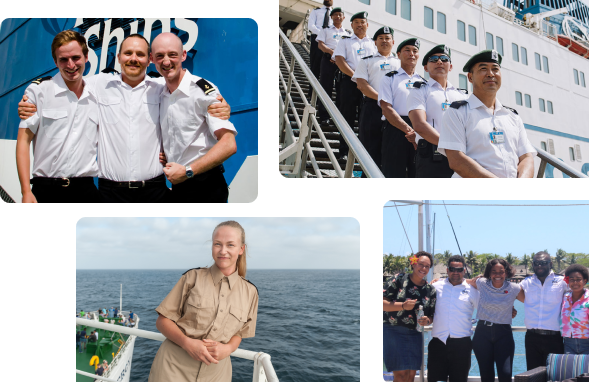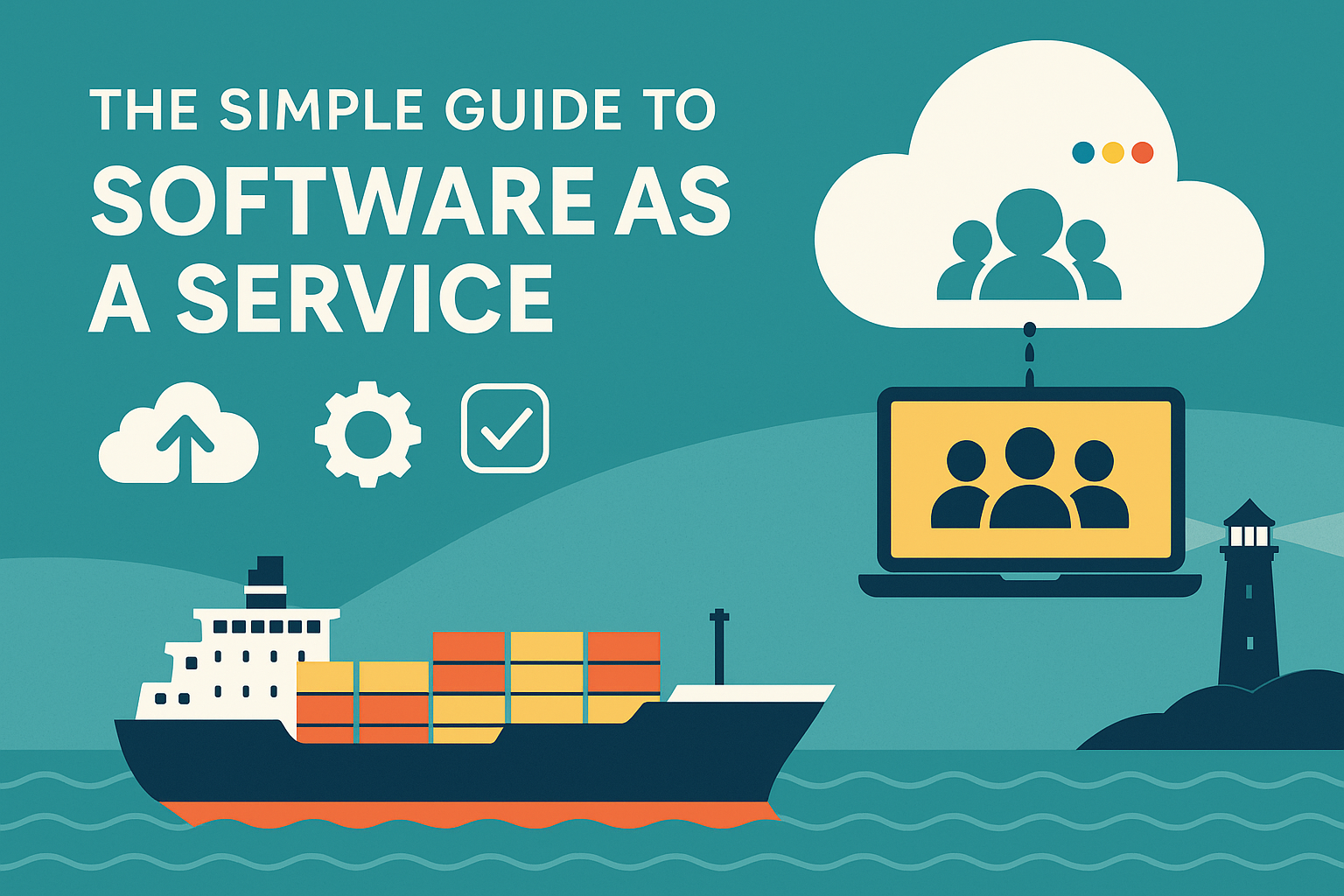Why Is It Free for Maritime Recruiters to Post Jobs on Martide?
Apr 23, 2024 · 11 mins read ·
Crew Management, Crewing Software, All Things Martide, Maritime Recruitment
We’ve told you before how we make maritime recruitment easier and quicker, and you may already know that it’s completely free to post your job vacancies on Martide’s online seafarer jobs board. So you might be wondering to yourself, “Is there a catch?” or “How does Martide make any money if I can post my jobs at sea for free??”
Well, we have to break it to you that there is, in fact, NO catch at all. If you want to use Martide as a Crew Manager, Recruitment Officer or Manning Agent purely to post your seafarer job vacancies you are more than welcome to.
We won’t charge you a fee for doing so and there are no hidden costs. There’s also no contract involved, meaning you’re not signing up to anything you can’t get out of.
Read more: Enjoy More Efficient Maritime Recruitment for FREE!
Simply create a Martide account, create your job post (which can be branded with your logo), post the job and then sit back and wait for applications to roll in.
Even better, applications come directly to you - we don’t get involved - and you can simply focus on finding the right seafarer for your vessel.
But that brings us back to the question: If we make maritime recruitment free for you, what are we getting out of it?!
Why is it free to post seafarer job vacancies on Martide?
There’s no big secret. The fact is that we let you post your seaman job vacancies on our online maritime jobs board for free because we make money from other aspects of our crew management software.

And even then, the way we price our additional features is also highly advantageous for Crew Managers and Manning Agents as we enable you to pick and choose which features you want to use.
We also use a sensible pricing structure which charges by each seafarer onboard per day. That means, you’re only paying for seafarers who are currently working on one of your vessels. As soon as they disembark, you stop paying for that crew member.
We also help you save money as our maritime crew management software operates on a Software as a Service (SaaS) model, meaning that you’re not saddled with high upfront costs.
What is Software as a Service in maritime recruitment?
Software as a Service companies have revolutionized the way we use and think about software. Gone are the days when shipowners and manning agencies either ran their operations manually, or were forced to purchase, install, and manage software on their own computers and laptops.
The SaaS model offers a more flexible, scalable, and cost-effective solution by providing software over the internet, allowing you to access and use applications, such as Martide’s maritime recruitment and crew planning system, hosted on remote servers.
This shift has not only changed the way businesses across virtually all sectors operate but also opened up new revenue streams for companies operating in this space.
Read more: How to Simplify Seafarer Travel with Integrated Solutions
So if you’re wondering exactly how we are able to offer you free maritime recruitment and job postings yet still afford to keep our lights on and our employees paid, here’s how SaaS companies, like us, make money.

How do Software as a Service providers make money?
Providers of Software as a Service solutions vary wildly and as such there are a few different ways that SaaS companies make money. Examples of Software as a Service solutions include everything from project management software and CRM (customer relationship management) tools to document management software and messaging and communication platforms - such as Slack.
Read more: What is Document Management & Why Should You Care?
Subscription SaaS models
The primary revenue model for SaaS companies is the subscription model. Unlike traditional software sales, where the software is sold as a one-time purchase, SaaS operates on a recurring revenue model.
Customers pay a regular subscription fee, typically monthly or annually, to get access to the software. This model provides a predictable and steady income stream for SaaS companies and aligns their success with the satisfaction and retention of their customers.
Tiered pricing SaaS models
To cater to a wider range of clients, SaaS companies often employ tiered pricing strategies. These tiers are designed based on different usage levels, feature sets, and support requirements.
By offering multiple pricing tiers, from basic to premium, SaaS companies can attract a broad customer base, from small businesses to large enterprises, maximizing their market reach and revenue.
This is how Martide’s pricing works: You use our maritime crewing system and recruitment platform’s features as little or as much as you need, and pay accordingly.
Freemium SaaS models
Many SaaS companies adopt a freemium model to attract users. Under this model, a basic version of the software is offered for free, while advanced features and capabilities are offered for a fee.

The freemium model not only serves as a powerful marketing tool for the provider, allowing users to experience the software's value before committing financially but it also gives smaller companies, such as those that are only interested in maritime recruitment, a valuable tool at no cost.
Read more: What To Do if a Fake Agency is Advertising Jobs in Your Name
For example, we let you post your seafarer jobs online for free. Having said that, we would never hassle you and try to get you to sign up for paid features! It’s completely your call.
Usage-based SaaS pricing
Another way SaaS companies generate revenue is through usage-based pricing. This model charges customers based on their actual usage of the service, such as the number of users, transactions, or amount of data processed.
Usage-based pricing allows customers to pay only for what they use, making the service more attractive to small or variable-usage customers. For SaaS companies, this model can lead to higher revenues from customers who use the service extensively.
SaaS add-ons and upsells
SaaS companies often offer additional services and features on top of their core offerings. These can include enhanced customer support, integration with other software, additional storage or data capacity, and specialized features.
For example, the paid version of Martide includes an API which allows you to integrate Martide with your existing crew management software or maritime recruitment platform seamlessly.
This also includes syncing with C Teleport so that you can request flight ticket information for seafarers when using the Crew Change function. You can also send crew change information directly to the Port Agent through Martide too.

Custom SaaS solutions and professional services
While SaaS companies primarily offer standardized software products, there's also a demand for custom solutions tailored to specific business needs. And as we all know, in maritime recruitment and crew planning, customization can be key.
There are so many different things to consider when hiring seafarers of different ranks and for different vessels on different trade routes that standardizing the process is virtually impossible.
Take our maritime recruitment pipelines, as we call our hiring processes. These act as pre-set stages so that you and your team all know exactly what to do next when it comes to interviewing seafarers, checking their documents, and signing contracts.
In Martide you can choose to include as few, or as many, stages as you like within your pipeline so that our marine recruitment platform works exactly the way you want it to, thereby meeting your shipping company or manning agency’s unique requirements.
What are the benefits of Software as a Service in maritime recruitment?
There are some very real benefits to using a Software as a Service solution whether you work specifically in seafarer recruitment or crew planning. Here are some standouts:
- Accessibility: As long as you have an internet connection, you can log in to your company’s SaaS of choice (so, Martide, then!) no matter where you are.
- This, of course, means that using SaaS for maritime recruitment is ideal for working from home.
- No prohibitive start-up costs. Because you’re not buying the software outright you’ll be avoiding paying a huge lump sum up front.
- Lower costs and less hassle moving forward. The provider of the software takes care of upgrades and bug fixes as part of your subscription fee, eliminating nasty hidden surprises.
- A maritime crew management system SaaS such as Martide is scalable, meaning that no matter how many users you have in the office, you’ll all be able to work alongside one another without needing to buy more software.
Read more: Pros & Cons of Software as a Service in Maritime Recruitment
Maritime recruitment and Software as a Service conclusion
SaaS companies, like Martide, have a variety of means at their disposal to generate revenue, from subscription models and tiered pricing to freemium strategies, usage-based pricing, and add-on services.

The flexibility of these models, coupled with the ongoing shift towards cloud computing, positions SaaS companies, and crucially their customers, well for sustained growth.
The key to success in the SaaS business model lies in continuously delivering value to customers such as you. And at Martide, we consistently upgrade existing features and launch new ones to ensure our maritime crew management system is the best on the market.
What should Crew Managers and Manning Agents do next?
Maybe you want to dip your toes into Martide’s maritime recruitment pool and try us out by posting some seafarer job adverts for free. Or perhaps you’d like to find out more about our crew planning and management Software as a Service.
Create a Martide account today and you’ll be able to start posting your jobs at sea right away or if you’d like to see how our paid features can help your small-to-mid sized shipping company or manning agency become more efficient, request a free demo now.

Eve Church
Eve is Martide's content writer, publishing regular posts on everything from our maritime recruitment and crew planning software to life at sea. Eve has been writing professionally for more than two decades, crafting everything from SEO-focused blog posts and website landing pages to magazine articles and corporate whitepapers.
UK

is the only site for maritime jobs



